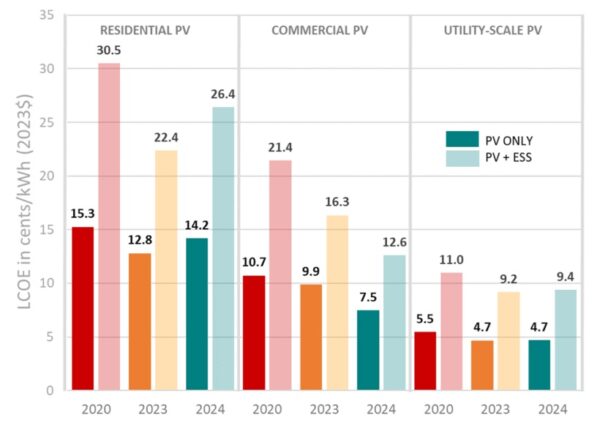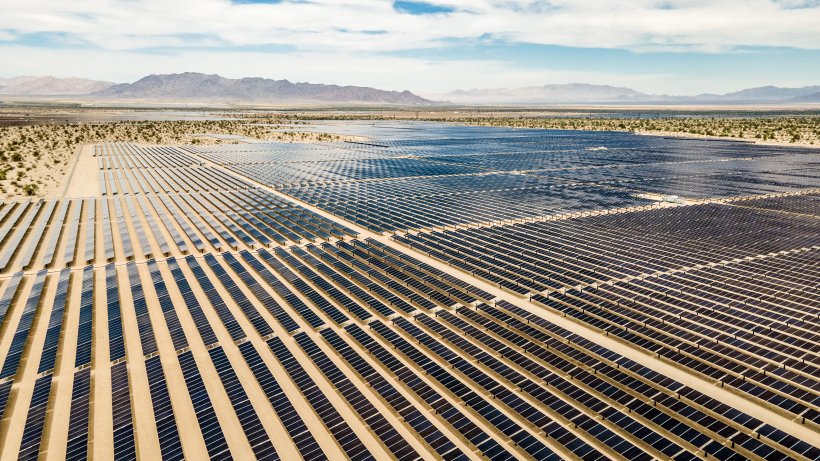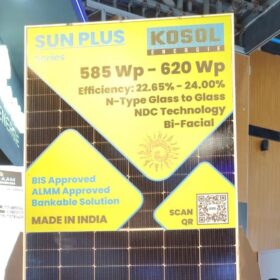From pv magazine USA
The Solar Energy Technologies Office (SETO) of the U.S. Department of Energy has released updated 2024 PV System Cost Model (PVSCM) data, revealing shifting price trends across the solar industry. Residential solar prices have risen, commercial prices have decreased, and utility-scale pricing remains flat.
The report indicates that the Minimum Sustainable Price (MSP), without incentives, for utility-scale, agrivoltaic, and residential solar projects are priced at $0.98/Wdc, $1.34/Wdc, and $2.74/Wdc, respectively. The Modeled Market Price (MMP) for these same systems is 14%, 12%, and 15% higher than the MSP.

SETO defines MSP as the minimum price that a company can charge in a balanced, competitive market while remaining financially solvent in the long-term. In contrast, MMP represents the actual market price under current conditions.
SETO also calculated levelized cost of electricity (LCOE) based on the MSP data across multiple U.S. regions with varying solar output. These MSP values, without state or federal incentives and averaged for weather differences, translate to an LCOE of $0.047/kWh for utility-scale solar, $0.075/kWh for agrivoltaics, and $0.142/kWh for residential solar. Adding batteries increases the LCOE for each system, with 240 MWh for utility-scale, 6 MWh for agrivoltaic, and 13.5 kWh for residential systems, roughly doubling the cost in each case, again before incentives.

LCOE for representative systems installed in an average U.S. climate without deductions for federal, state, or local incentives Source: SETOWhile the LCOE values generally show a downward price trend, the data reveals more nuance as SETO continues refining this calculation.
For example, the residential LCOE showed a sharp drop from 2020 to 2023, followed by an increase in 2024. This contrasts with actual pricing trends, likely due to evolving methodologies, as hardware costs, particularly for solar panels, have continued to fall. pv magazine USA has reached out to the DOE for comment. Similarly, commercial prices seem to show a smooth progression, but this includes a shift from standard commercial ground-mount systems to agrivoltaic setups. Utility-scale pricing has remained more consistent, with only a slight increase in 2024.
SETO also released the PVSCM cost modeling tool, which provides a detailed cost breakdown for system components. This tool offers insights into the cost structure of items like solar panels, helping the industry better understand evolving market dynamics.


In total, SETO released four files: a pricing data file for residential, commercial, and utility-scale systems, along with the PVSCM tool used to analyze the data. The residential energy storage tab itemizes the cost of batteries, including components such as cells, packs, enclosures, AC-DC converters, labor, profit, and shipping, among other factors.
A representative from the Department of Energy (DOE) confirmed that the annual U.S. Solar Photovoltaic System and Energy Storage Cost Benchmarks will no longer be published. The press release included links to several historical documents, and a summary of historical pricing, including the most recent data release, is expected in six months.
This content is protected by copyright and may not be reused. If you want to cooperate with us and would like to reuse some of our content, please contact: editors@pv-magazine.com.









By submitting this form you agree to pv magazine using your data for the purposes of publishing your comment.
Your personal data will only be disclosed or otherwise transmitted to third parties for the purposes of spam filtering or if this is necessary for technical maintenance of the website. Any other transfer to third parties will not take place unless this is justified on the basis of applicable data protection regulations or if pv magazine is legally obliged to do so.
You may revoke this consent at any time with effect for the future, in which case your personal data will be deleted immediately. Otherwise, your data will be deleted if pv magazine has processed your request or the purpose of data storage is fulfilled.
Further information on data privacy can be found in our Data Protection Policy.